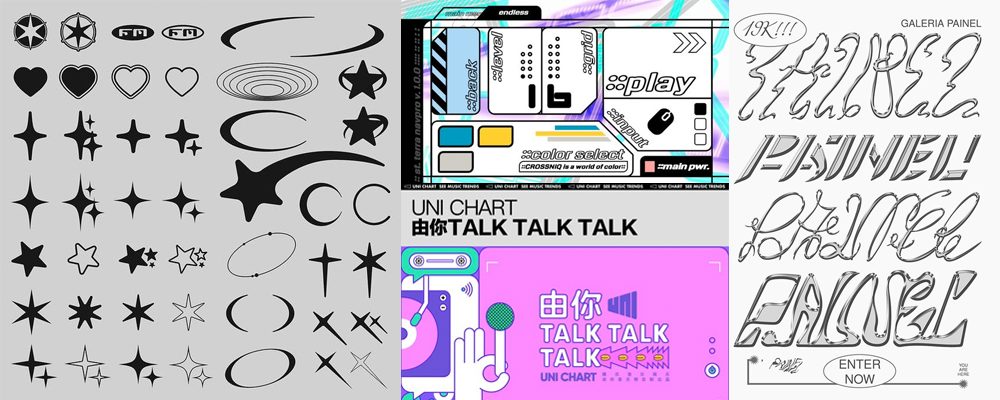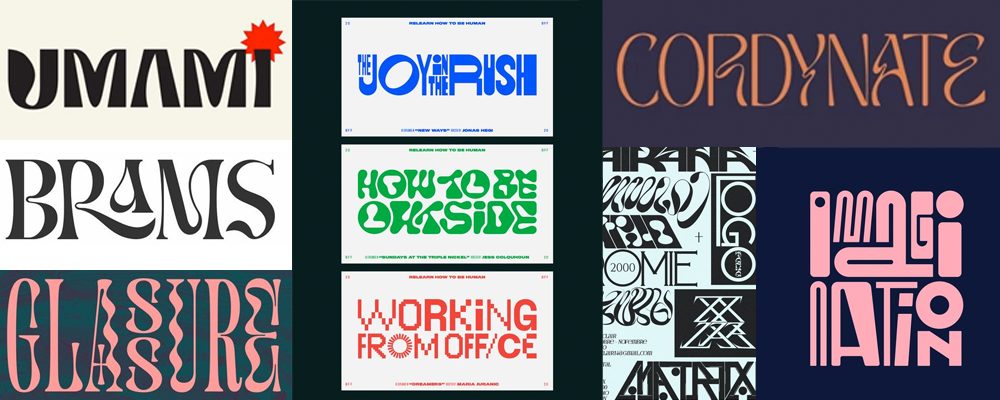Design trends often represent more than just trends or aesthetics: they’re a representation of a culture, of what people want and value. They may change frequently, but that’s because audiences change frequently, and they simply change with the times.
Looking forward to 2022, we’re going to go over some trends we think are going to play a key role this year, and why.
Nostalgia
What’s old is new, what’s new looks old, and what looks new is also probably inspired by something old. Two years into a global pandemic and what feels like an ever constant stream of bad news cycles, people are longing for simpler times, back when technology felt exciting and new, and not a constant cloud of doom over our heads: the early 2000s.
Y2K has been the inspiration behind a lot in pop culture lately, from fashion (pink, rhinestone-encrusted, and covered in designer labels) to music (Saucy Santana’s Material Girl comes to mind). Y2K is all about maximalism, about bling, about having the latest and hottest whatever to your name. After years of minimalist trends, it only makes sense that maximalism has its turn too. The pandemic also affected this–people have been restricting themselves in some way for years. They want to go out, spend money, have all the things they want because life is short.
That current pop culture has trickled down into design and will play a big role this year. Things like neon colors, chrome finishes, and futuristic shapes will have their turn in the spotlight once again.

Decorative display fonts
Following the maximalist trend, decorative, bordering-illegible display fonts are becoming more and more popular, and will have their moment this year. Designers are really beginning to experiment with type vs. shape, and turning letters into their own expressive shapes beyond being just letters. Another pushback against the minimalist, sans-serif look that has dominated for years, these typefaces definitely stand out. This trend can be a risk: with accessibility being a larger point of focus, it can be tricky to work with a font that is harder to read. But when done well, the reward is worth it.

Anti-design
So far, the trends discussed have been reactionary to years of minimalist design, gaining popularity due to cultural overexposure to the super-simple and super-clean. Not to mention, user-focused design has led to a lot of apps and websites that look all too similar.
But anti-design is perhaps the most drastic reaction of all. Anti-design is exactly that: anti design. It goes against established design principles of balance, color, contrast, and size. There is no gentle rounded shapes and friendly, humanoid illustrations in anti-design. There’s contrasting colors, oversized typography, asymmetry, crowded and overlapping designs. Its hard to look at–some say it’s even ugly. But anti-designers stand by it, claiming it as eschewing pre-set design standards that have already been established. Much like the Brutalism art movement, anti-design is a push back against conventional aesthetics and forces you to consider what exactly you think is “good” design. Does good necessarily equal pretty? And in a society that has started asking these tough questions about more than just design, anti-design fits right in.

Eco-friendly vs. NFTs
Last year, we predicted that nature and eco-friendly design would gain popularity. And it definitely has: people have begun prioritizing ethical decisions in their lives. They’ve flocked to brands with green missions, with eco-friendly methods, with recyclable packaging. But while eco-friendly has gained popularity in the consumer sphere, the opposite has been happening in the tech and finance industries.
It seems remiss to write a list of 2022 trends without mentioning the year’s hottest buzzword: NFTs, or Non-Fungible Tokens. To their supporters, NFTs are the future of digital ownership. They’re a way for artists to more effectively monetize their craft outside of currently existing subscription or patron models. To their detractors, they’re an ineffective scam that breeds art theft and hurts the environment with every purchase.
While going into what NFTs are and whether or not they really do what they say they do will take too long, what won’t is the reality that anything conducted on the blockchain takes a large amount of energy. Purchases made via cryptocurrency make up a very small percentage of purchases in general, but they use much much more energy than the average credit card transaction. In the current state of blockchain, the environmental impact is too large to ignore.
And that’s where I think things will get interesting. Brands and designers will want to expand into and explore this new world of NFTs and the metaverse, but will have to reckon with the environmental impact (and the inevitable online backlash). Will brands ultimately decide that the metaverse is a worthy expansion, environment be damned? Will NFTs and the metaverse eventually quietly fizzle out, much like how Bitcoin payments for consumer items has? Will it turn out to all be a pyramid scheme that screws over small time designers just trying to make it? It’s hard to tell, but it’s definitely something that will dominate the design conversation in 2022.
2022 is a year of reactionary design- to the world at large, to technology, to years of previous design. It seems this year, visuals will be bright, bold, and hard to ignore. There won’t be any restriction, just as much as we can bear to make. And after years of lockdowns and rules, it kind of makes sense.